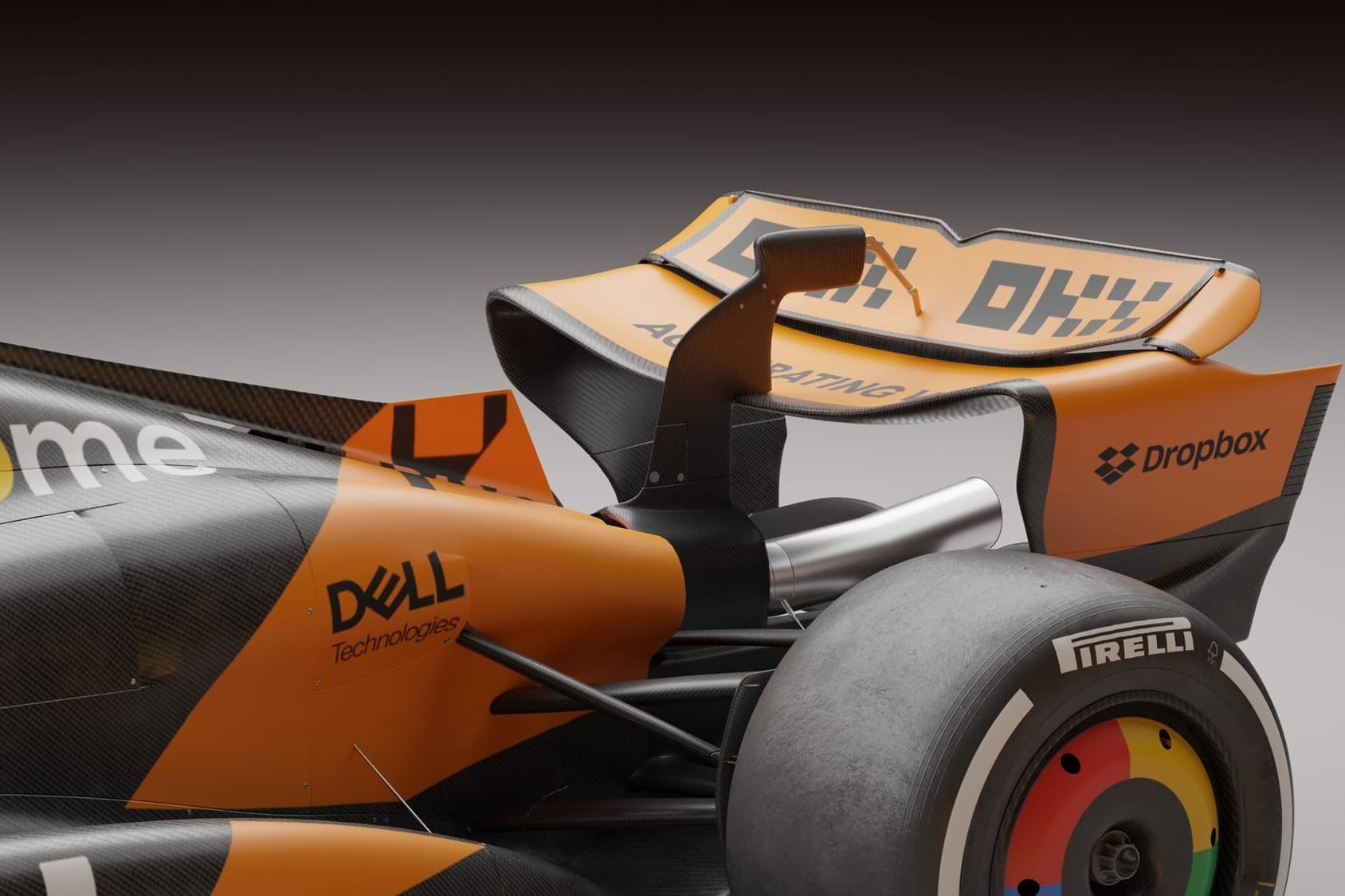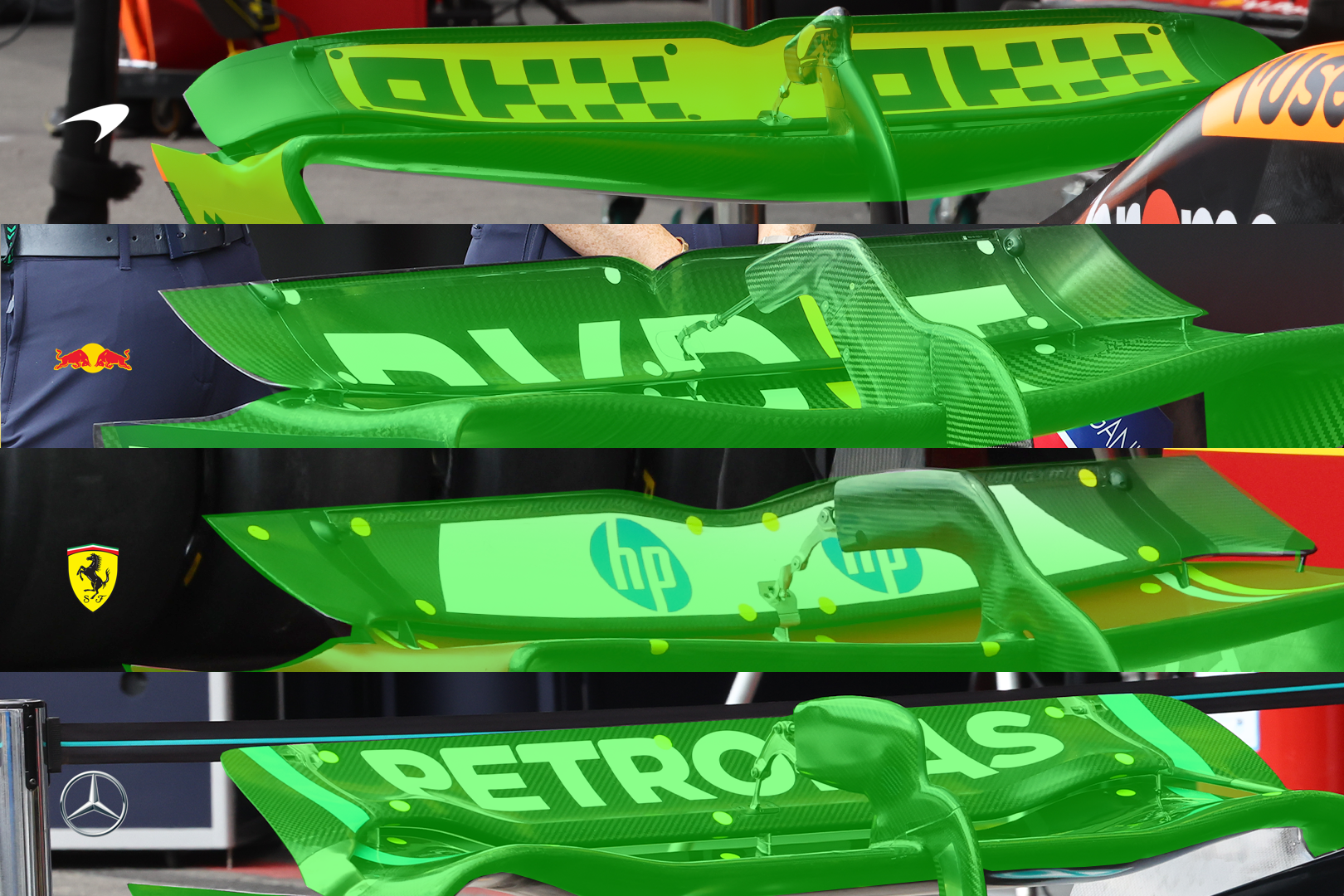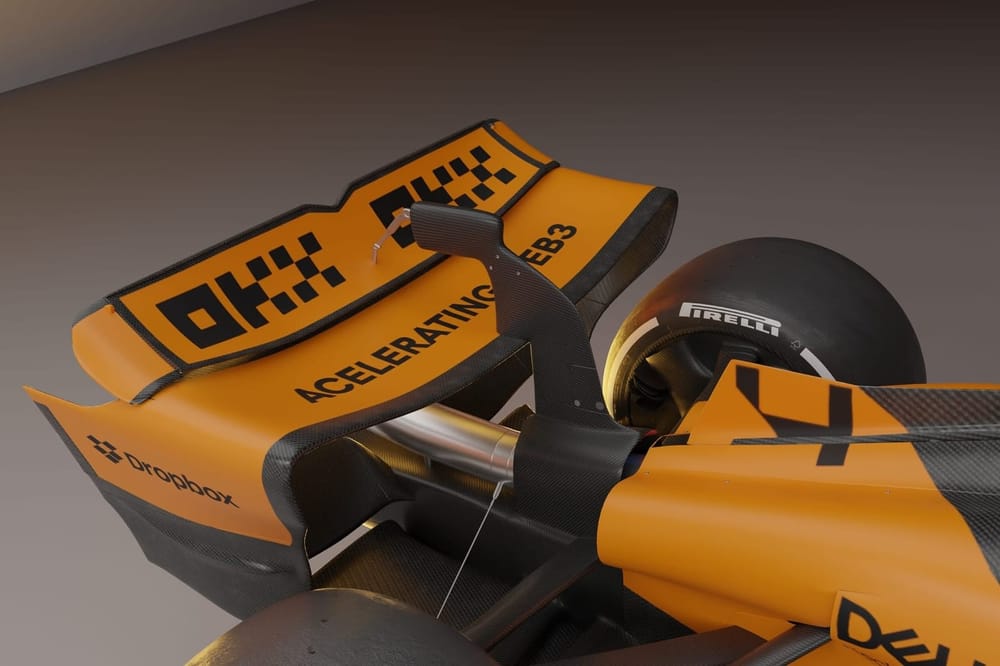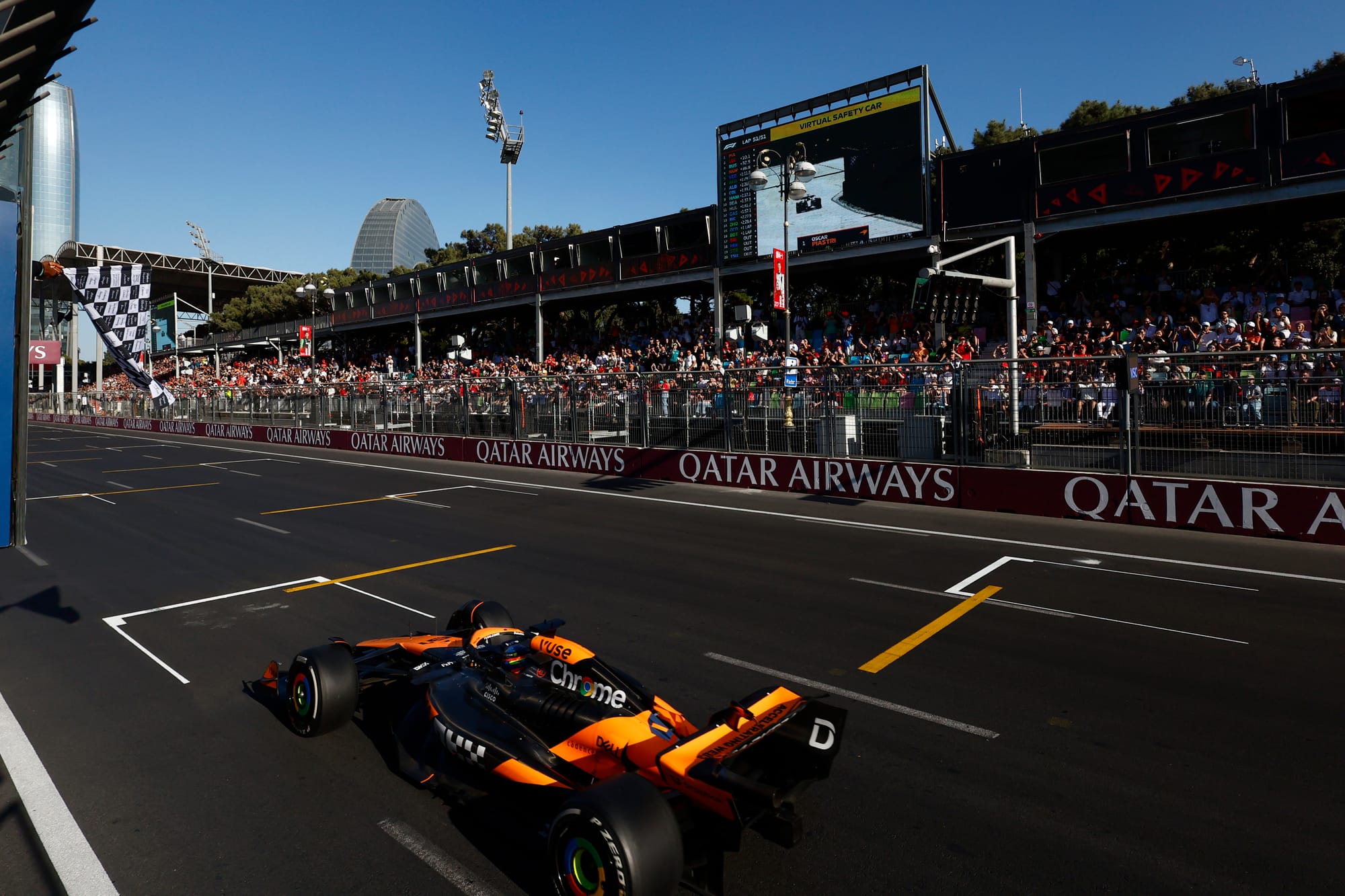Up Next

The FIA says it is reviewing data and evidence from Formula 1’s Azerbaijan Grand Prix amid scrutiny of McLaren’s rear wing, and is open to taking action this season or more likely beyond it.
Just a couple of weeks after rivals queried the way McLaren’s front wing deforms under load, and the FIA insisted all designs on the grid were legal, the behaviour of the MCL38’s rear wing has attracted attention.
Footage from the car in Baku looking back at the rear wing showed the flap leading edge deforming slightly and increasing the gap between it and main plane, leading to allegations that McLaren’s legal, controlled bodywork manipulation extended to creating a ‘mini-DRS’ effect.
McLaren introduced a new family of rear wings “upgraded around some more modern concepts” at this year’s Belgian Grand Prix, where video footage seems to show similar deformation.

In response to the scrutiny of McLaren’s rear wing from Baku, the FIA said in a statement issued to The Race: “The FIA is closely monitoring the flexibility of bodywork on all cars and reserves the right to request teams to make modifications at any point during the season.
“However, if a team successfully passes all deflection tests and adheres to the regulations and technical directives, they are deemed to be in full compliance, and no further action will be taken.
“The FIA is currently reviewing data and any additional evidence that has emerged from the Baku GP and is considering any mitigating measures for future implementation.
“This is part of the standard process when scrutineering technical legality, and the FIA retains the authority to introduce regulatory changes during the season if required.”

Previously, the FIA has focused more on stressing its work is on gathering data to inform any potential regulatory changes for 2025, mainly around the load tests that effectively police the technical regulations on flexible bodywork.
That is reiterated in the above statement but, given the attention has so far been on front wings, the FIA is aware of McLaren’s latest advancement with its rear wing and is leaving the door open to changes on that front as well.
While it specifically references the possibility of requesting modifications during the season this is thought to be unlikely.
As for the legality of the design itself, F1’s technical regulations are ostensibly straightforward as they state that “all aerodynamic components or bodywork influencing the car’s aerodynamic performance must be rigidly secured and immobile”, policed by the aforementioned static load-deflection tests.
The rules permit a certain amount of flexibility during these tests, as there must be some degree of deformation in bodywork or else parts would break under the loads that a moving F1 car subjects them to.
These are also augmented by technical directives, such as one issued last year that claimed assembly designs that exploit localised compliance or degrees of freedom are not permitted.
That TD went on to state that any assembly deflection must not be the result of purposefully designed localised compliance or degrees of freedom between adjacent components.
Designs that the FIA considers are not permitted include, but are not limited to wing elements that can rotate relative to the bodywork that they are fixed to, and designs that utilise ‘soft’ trailing edges to wing elements to prevent ‘localised cracking’ as the result of component assembly deflection.
The FIA and all teams are aware of the complexity of policing flexible bodywork, as a grey area must exist but defining it is difficult if not impossible. That is why the FIA is trying to gather as much data as possible and wants to make any adjustments deemed necessary on a more informed basis longer-term.




